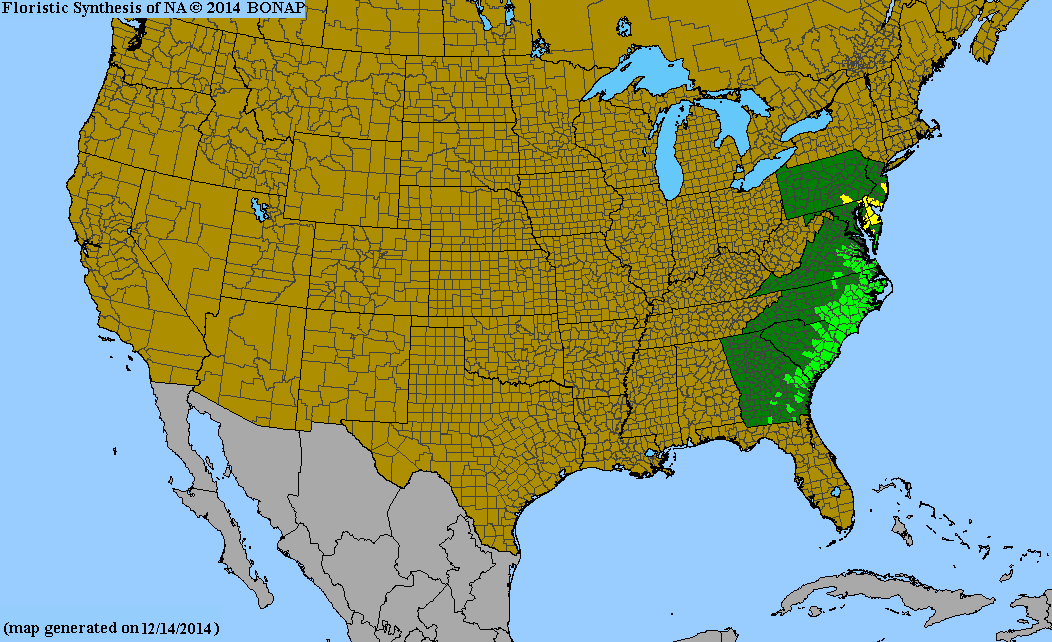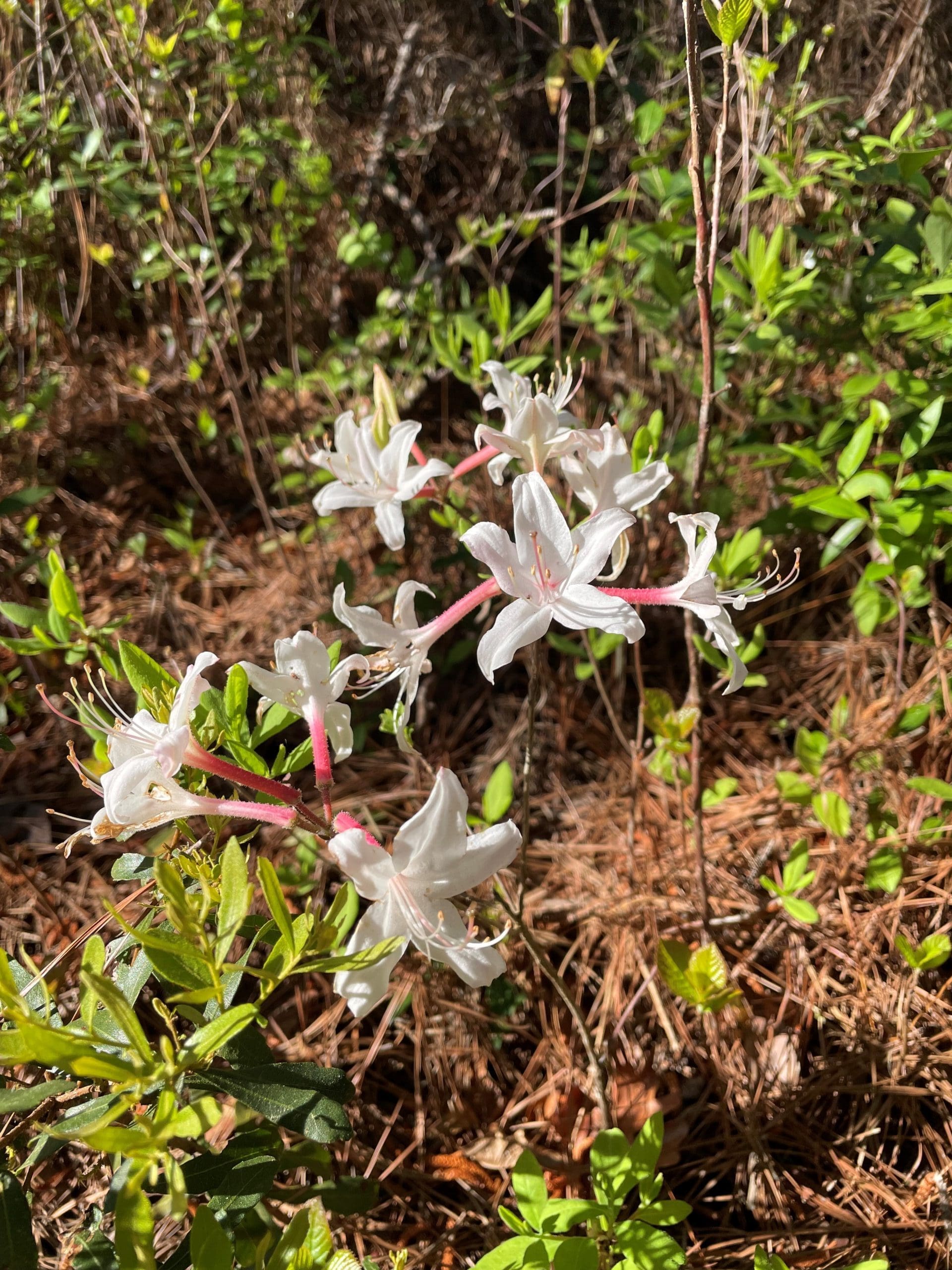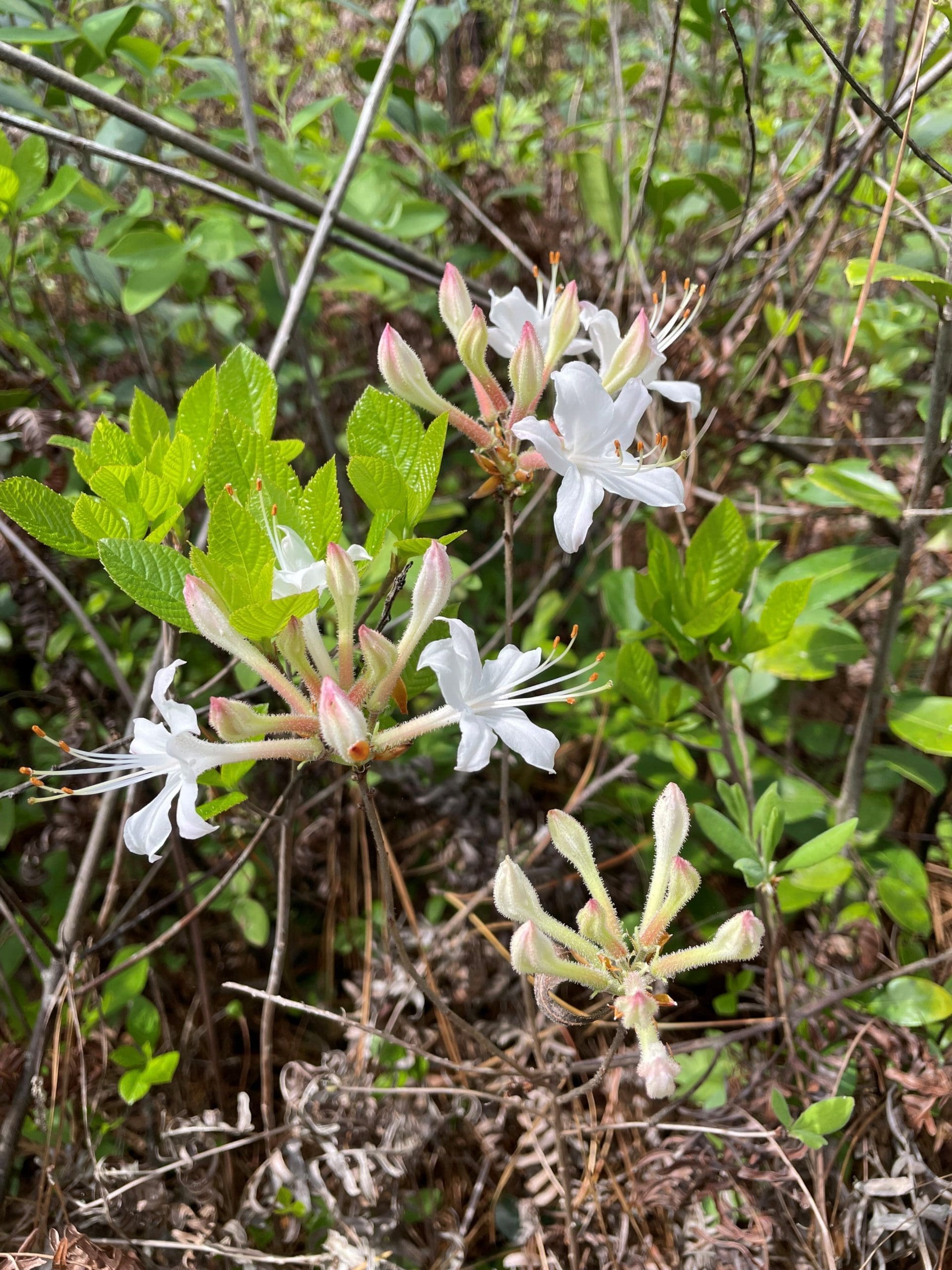Ericaceae
dwarf azalea
Rhododendron atlanticum
Synonyms
Azalea atlantica
Rhododendron atlanticum var. atlanticum
Rhododendron atlanticum var. luteo-album
Other Common Names
coastal azalea
Plant Type
Shrub (less than 10 ft)
Life Cycle
Perennial
Typical Size
2-3 ft. tall
2-3 ft. wide
Inolerant of
Poorly Drained Soil
Propagation
By seed
Plant Propagation Notes
Germination is best between 45-50 degrees over a 2:1 perlite/peat mixture.
Plant Planting Notes
Provide up to 3 ft spacing.
Plants/Diseases
Numerous insects and diseases may affect flame azalea including aphids, borers, lace bugs, mealybugs, mites, canker, crown rot, leaf spot, and rust.
Wildlife Benefits
Nectar/pollen source for pollinating insects
Leaves
Leaves alternate, elliptical to ovate with entire margins and a rough surface texture.
Flowers
White with pink funnel-shaped flowers on raceme.
Fruit
Capsule.
Bark
Brown.
Toxicity
All parts of the plant are highly toxic if ingested.

USDA Hardiness Zones
6, 7, 8
Light Exposure
Full Sun, Part Sun/Shade
Soil Moisture
Medium, Moist
Soil Drainage
Well-drained
Soil pH
Acidic (less than 6.0)
Native in South Carolina?
Yes
Plant Native Habitat
Sandy open habitats of longleaf and other savannas, pocosins, and sandhill-pocosin ecotones.
Global Conservation Status (NatureServe)
Apparently Secure (G4)
Federal Conservation Status (USFWS)
Not Listed
Distribution Notes
Common in the South Carolina coastal plain. Absent from the sandhills, peidmont, and mountains.


